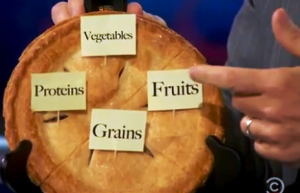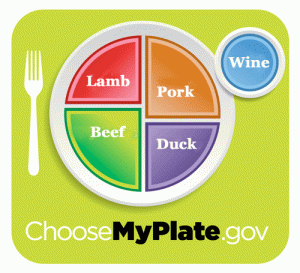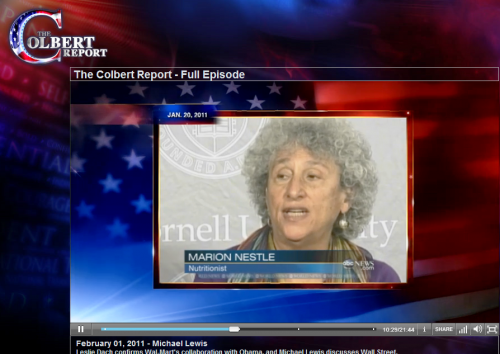Q: I saw you on “The Colbert Report” (Aug. 19) talking about sugar policy. Explain, please. I don’t understand why sugar policy is a topic for Comedy Central.
A: Neither did I until I saw Stephen Colbert douse himself with 5 pounds of sugar over the impending “crisis.” We have a sugar crisis? According to processed food manufacturers, we are about to run out of sugar. Horrors!
Earlier in August, Kraft and other food processors asked the U.S. Department of Agriculture to raise the quota on sugar imports. Sugar availability, they complained, is the lowest in years and it’s the USDA’s fault.
The USDA firmly controls amounts of sugar (sucrose) produced by American cane and beet growers through quotas. It even more firmly controls sugar imported from other sugar-growing countries through quotas and tariffs. And as corn is increasingly diverted to biofuels, less high-fructose corn syrup (HFCS) is around to make up the shortfall.
Should we worry?
The shortage is no crisis. At worst, it is temporary and will end as soon as the 2009 harvest is in. But processed food makers are right about one thing: Sugar is the most absurdly protected agricultural commodity in America.
For decades, no matter what it cost on the world market, quotas and tariffs ensured that Americans paid two or three times as much for sugar. High sugar prices cost American consumers about $3 billion a year. But because this works out “only” to about $10 per year per capita, nobody much cared.
If you think of $10 as trivial, you won’t give sugar protectionism another thought. But if you look at this system as an unnecessary transfer of $3 billion a year from 350 million Americans to a few thousand sugar growers and processors, you can understand why sugar policy is ripe for satire.
Here’s how the system works:
Quotas allow U.S. producers to grow only specified amounts of sugar cane and sugar beets each year, for which the USDA guarantees a higher-than-market price. Beets get 55 percent of the quota; cane gets 45 percent. The quotas are fixed. If you want to grow sugar beets in your backyard and sell the sugar to USDA at the favorable support price, too bad for you. You only get a quota if you already have a quota.
As for tariffs, the 2008 Farm Bill requires 85 percent of total sugar in the United States to be produced domestically, and allows only 15 percent to be imported. That 15 percent is distributed through quotas awarded to about 20 countries.
Above and beyond the quotas, imported sugar is subject to high tariffs. Mexico is an exception. Under NAFTA, Mexico gets to sell us as much sugar as it wants at the favored price. However, few countries in Africa hold quotas. What if you are an African cane-growing country and want the high quota price for your sugar? Not a chance.
Imports are never supposed to top 15 percent, so the USDA can’t increase the percentage. But we participate in the World Trade Organization, which obligates us to take world market sugar. Oops. These policies don’t match. Processed food makers must think the contradictions will allow the USDA to let in more sugar. Maybe, but the legalities are not yet decided.
Mind you, sugar producers and processors love this system. They argue that it keeps jobs in rural America and eliminates dependence on foreign sugar imports. To make sure nobody scrutinizes the system too carefully, they formed cooperatives to avoid antitrust laws.
Sugar producers are among the most generous and equal-opportunity contributors to congressional election campaigns, giving to both Democrats and Republicans. For decades, administrations of both parties have tried to end sugar supports. No such luck.
A shift’s brewing
Policies may change, because the gap between the prices for domestic and world market sugar – and for high fructose corn syrup – has narrowed recently. Sugar is now at war with HFCS. As HFCS is increasingly known as a key junk food ingredient, manufacturers are rushing to replace it with sucrose, which they can tout as “natural and unprocessed.”
Other sugar issues are also ripe for comedy. Most sugar beets are now genetically modified, leading many companies to avoid using beet sugar. In the South, sugar cane production pollutes the Everglades, which is costing billions of dollars to clean up. Investigative reporters are riveted by the feudalistic labor practices of sugar plantations.
And then there’s Cuba. Until the Castro revolution, that’s where we got most of our imported sugar. When relations improve, will Cuba get a sugar quota?
If sugar is responsible for any true crisis, it is because of its role as an ingredient in processed foods. Cheap sugar reduces the cost of candy and soft drinks. Cheap junk foods are highly profitable. Otherwise, our sugar policies make no sense in today’s global marketplace.
But we would be healthier eating less sugar, anyway. So here’s my solution to the non-crisis: Eat less sugar!







